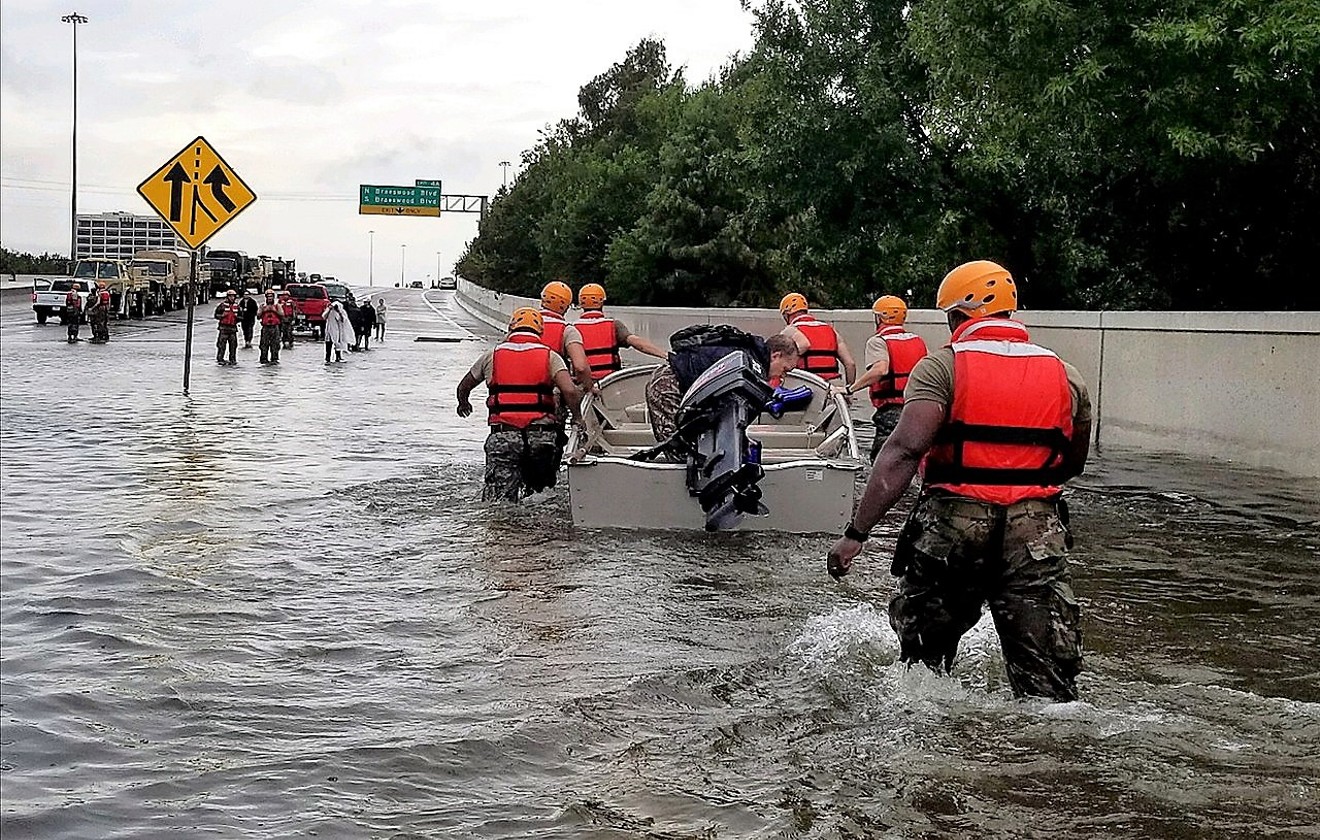“Hurricane Harvey was more than a historic flooding event. The aftermath was in large part a man-made environmental disaster,” Ilan Levin, Texas director of the Environmental Integrity Project, said this week. “We have an obligation to protect communities next door to chemical plants and refineries that suffer the worst public health consequences of storm-related pollution.”
According to the report, which relies on data reported by plants themselves to the state, Texas must develop a coordinated disaster response plan if it wants to avoid emergency plant shutdowns during future storms. Planned shutdowns, like those in Corpus Christi, release less pollution than those that are unplanned, according to the report.
"While some pollution releases during natural disasters may be unavoidable, improvements such as coordinated and staged shutdowns of petrochemical plants, improved maintenance, and equipment better designed to withstand heavy rainfall could help improve the response next time there’s a major storm in the region," the report says. "And there will be a next time: climate change contributed to Harvey’s historic rainfall, as warmer air holds more water and record warm water in the Gulf of Mexico helped the storm build strength."And there will be a next time: climate change contributed to Harvey’s historic rainfall, as warmer air holds more water and record warm water in the Gulf of Mexico helped the storm build strength. — Environmental Integrity Project
tweet this
In addition to the millions of pounds of air pollution released during the storm, sewage plants and industries on the Texas coast released at least 150 million gallons of wastewater, according to the report. In order to prepare for future large storms, the report says, wastewater treatment plants should "consider taking precautionary steps to deal with future floods, including by building more protective walls and levees, moving to higher ground and green solutions such as integrating treatment areas with artificial wetlands."
Companies should also consider getting rid of so-called "floating roof" tanks, which, as the name implies, have tops that merely float on top of the gasoline or other petrochemical contained within. Fifteen of those tanks failed during Harvey, leading to 3.1 million pounds of air and water pollution.
Improvements are also needed in the way the state reports pollution in the midst and aftermath of natural disasters, according to Bakeyah Nelson, the executive director of Air Alliance Houston. While shutting down some equipment may be necessary, the state could easily invest in mobile air-monitoring units and create a pollution surveillance plan so residents of vulnerable areas can be made aware of dangerous pollution hot spots.
“During the storm, state and federal officials provided overly broad statements about pollution levels, repeatedly reassuring people that they had no reason to worry,” Nelson says. “This was despite the fact that 75 percent of the air pollution monitors had been shut down in advance of the storm, and there were known hot spots of cancer-causing benzene in southeast Houston. This cannot happen during the next storm.”
Immediately following Hurricane Harvey, plants estimated that they'd released 8.3 million pounds in unpermitted emissions during the storm. They later revised those estimates down by 1.7 million pounds, citing their state permits, which allow them to discount pollution emitted during planned startups and shutdowns, and Abbott's decision to halt pollution-reporting requirements for eight months after the storm. According to the report, the plants should not have discounted the emissions, because the permitting process is not meant to cover pollution occurring from unexpected shutdowns.
Chevron Phillips, which marked down 34,591 pounds in pollution in the months after the storm, said that it did so because it didn't actually shut down its facility in Port Arthur, as planned.
"Once it was apparent that the emissions would be within the allowable limit of the permit for a shutdown, the notice to the [Texas Commission on Environmental Quality] was rescinded," the company said in a statement to the Houston Chronicle.












